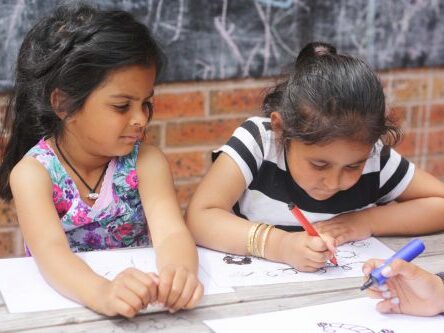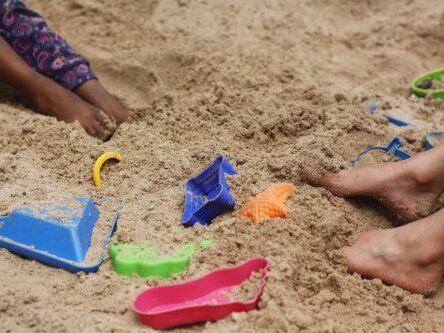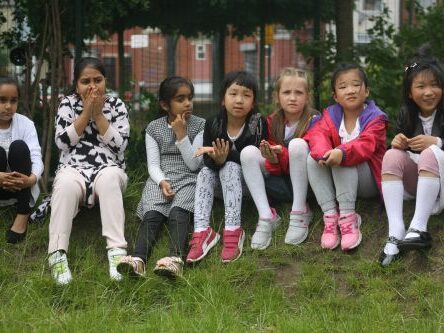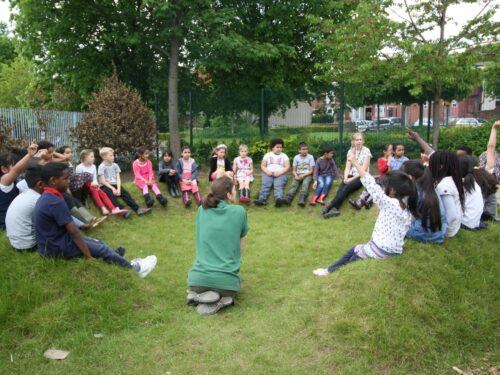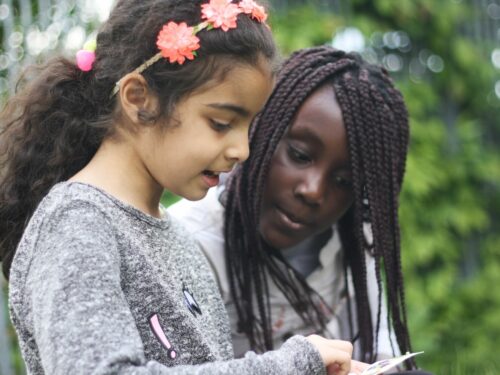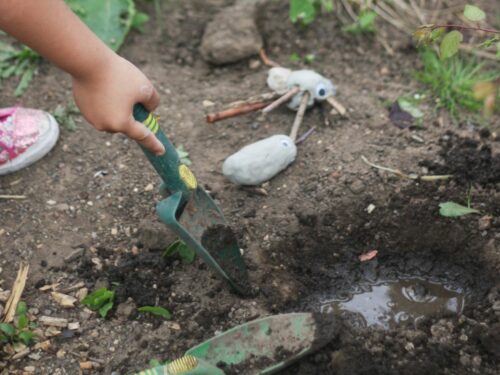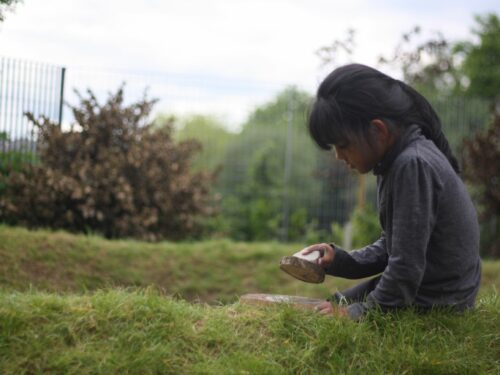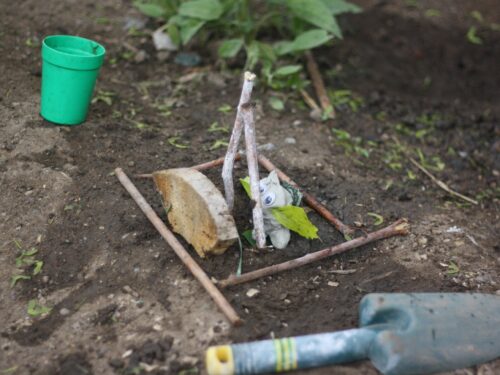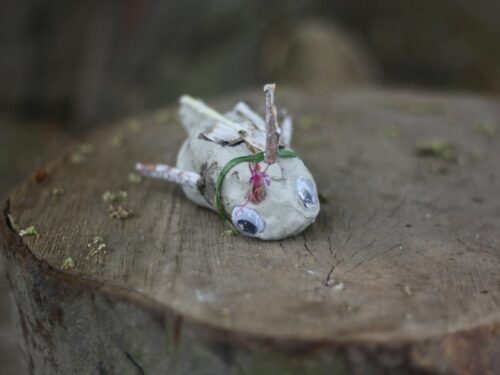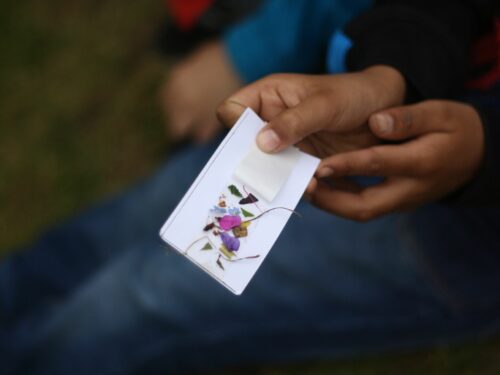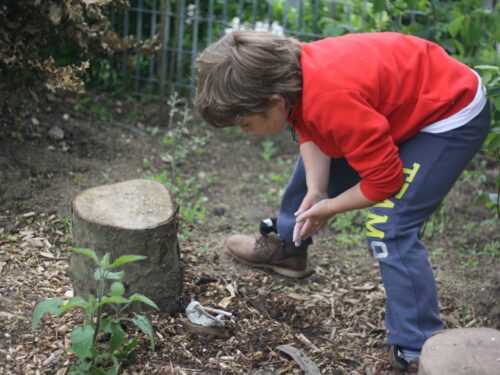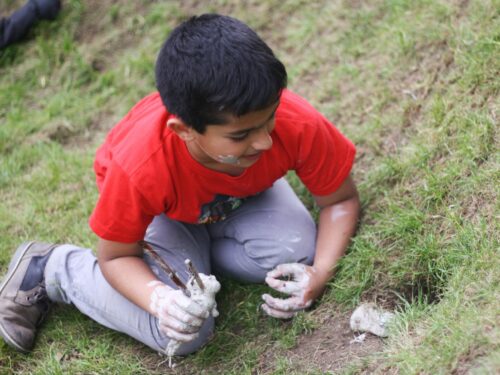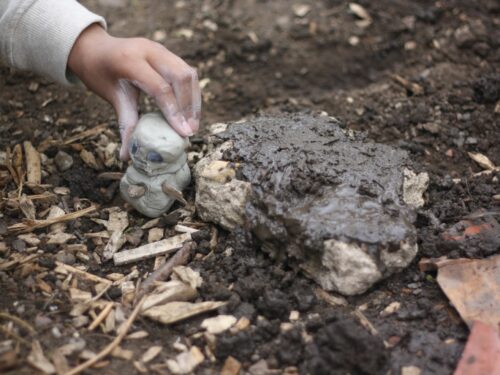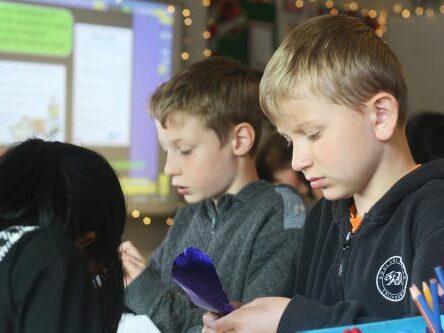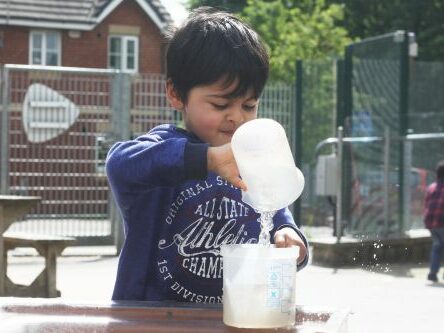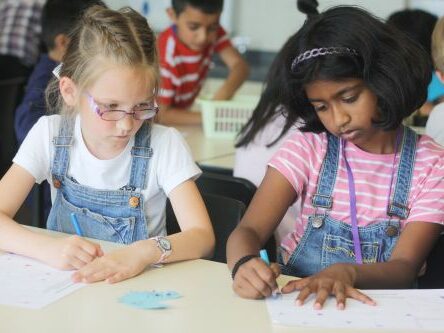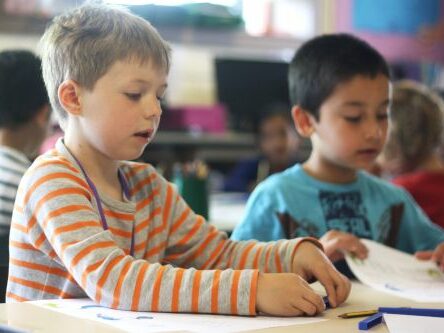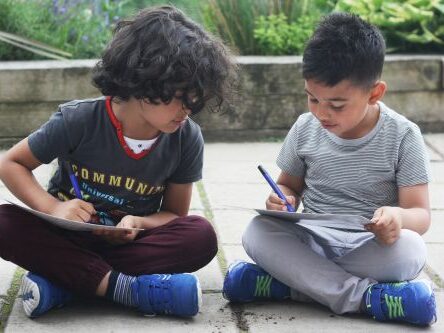At Sharrow School we value exploration, appreciation and understanding of art in all its forms, and we believe that every child has the potential to be creative. Our school community is wonderfully diverse and we therefore have a wealth of culture and creativity to discover and celebrate. We aim to ensure that our children are given lots of opportunities to develop their confidence, individual creativity and skills through carefully planned lessons which examine how art reflects the history, culture and evolution of our global community.
Our art curriculum is closely linked to the termly topics in each year group, enabling the children to explore and practise different skills in a familiar and relevant context. Over the course of their primary education we introduce children to a wide range of artists and art forms, scaffold discussions involving differing opinions and beliefs and learn about the historical and cultural importance of art through the ages. Through practical exploration of different art forms, which include (but are not limited to), drawing and painting, sculpture with various media, physical and vocal expression and graphic design, we aim to equip children with the confidence and tools to design and develop their own works of art and craft. This supports them to develop their independent thinking skills, the confidence to express themselves in a safe and supportive environment, and to understand and respect similarities and differences.
We are very lucky to have links with local artists in the community, giving children opportunities and experiences to work collaboratively and creatively in different ways. We also enjoy immersive art days, both in year groups and as a whole school, with a shared theme or idea – inviting families to join us in celebration of the collective creativity of our children.
“I can” statements – Art
| I can … | Year 1 | Year 2 | Year3 | Year 4 | Year 5 | Year 6 |
| Line | I can create lines of different thickness and length | I can use lines crossing to make simple patterns | I can use marks and lines to show texture in my art | I can use line to record shapes seen in combination and repetition | I can use line to create negative space | I can line to create perspective |
| I can record my ideas and represent what I see and touch | I can record different types of line in the environment | I can use a viewfinder to focus on a specific part of an artefact before drawing it | I can use line, shape and dots to represent figure and forms | I can use lines to create mood and feeling e.g. short, hard line gives a different feeling to a more flowing one | I can experiment with shading and perspective to create form and texture | |
| Colour | I can name the primary and secondary colours | I can create all the secondary colours | I can create tints by adding white I can create tones by adding black | I can order and create tones from light to dark and in monochrome – black/grey/white | I can mix all three primaries in varying amounts to make browns / make ‘black’ | I can create hues of colours e.g. mix a range of oranges |
| I can make collections of the same colour, different shades | I can create and use primary and secondary colours to represent what I see or imagine | I can compare and contrast opposite sides of the colour wheel | I can mix a colour to match those observed | I can use colour to create mood and feeling | I can use colour to convey more subtle emotions e.g. hope, fear, suspicion | |
| Form | I can manipulate materials to change the form | I can use materials to make known objects for a purpose | I can make geometric forms and join them together to make more complex forms | I can develop surface patterns and textures on a sculpture | I can incorporate form, pattern and texture into my work | I can independently select and effectively use relevant processes in order to create successful work |
| I can explore and talk about the surface qualities of different objects and materials | I can sort and select materials to make structures using appropriate joining methods | I can combine materials to make patterns and textiles and describe objects | I can analyse and interpret natural and man-made forms of construction | I can use technical vocabulary related to form to explain my work | I can investigate, research and test ideas and plans using sketchbooks and other approaches to develop my work | |
| Know about great artists, craft makers and designers | I can describe what I can see and give an opinion about the work of an artist | I can suggest how artists have used colour, pattern and shape | I can compare the work of different artists | I can explain some of the features of art from different cultures / historical periods | I can research the work of an artist and use their work to replicate a style | I can explain the style of my work and how it has been influenced by a famous artist |
| Evaluate and analyse creative works | I can ask questions about a piece of art | I can talk about similarities and differences between my own and others’ art work | I can talk about what I think or feel about my own art work and other peoples work | I can describe how my work developed | I can modify and improve my work as it progresses so that it turns out how I wanted it to. | I can evaluate, interpret and explain my work and that of some significant artists |
“I can” statements – Music
| I can … | Year 1 | Year 2 | Year3 | Year 4 | Year 5 | Year 6 |
| Listening and appraising | I can say whether I like or dislike a piece of music | I can listen out for particular things when listening to music | I can use musical words to describe a piece of music and compositions | I can identify and describe the different styles of music | I can describe, compare and evaluate music using musical vocabulary | I can analyse different pieces of music and talk about my preferences |
| I can respond to different moods in music | I can say how a piece of music makes me feel and use the word ‘tempo’ appropriately | I can use musical words to describe what I like and do not like about a piece of music | I can talk about the style of different types of music and my preferences | I can contrast the work of composers and explain my preferences | I can compare and contrast different composers from different times or different styles | |
| Composition | I can make a sequence of sounds on unturned instruments | I can use symbols to represent sounds | I can make connections between notations and musical sounds – crotchets, quavers | I can use notation to record compositions in a small group or on my own | I can use notation to record my compositions and play them back | I can use a variety of different musical devices in my composition |
| I can choose sounds to represent different things | I can choose sounds which create an effect | I can combine different sounds to create a specific mood or feeling | I can explain why silence is often needed in music and explain what effect it has | I can change sounds or organise them differently to change the effect | I can suggest improvements to my own work and that of others | |
| Rhythm | I can clap a steady pulse | I can repeat short rhythmic and melodic patterns | I can play simple rhythmic patterns on an instrument | I can create 2 bar repeated rhythmic patterns on an instrument | I can perform a simple part rhythmically | I can improvise within a group using melodic and rhythmic phrases |
| I can clap short rhythmic patterns | I can sing or clap increasing and decreasing tempo | I can perform simple patterns and accompaniments keeping a steady pulse | I can create 4 bar repeated rhythmic patterns on an instrument | I can play a rhythm as part of a group | I can make up a rhythm with a group and then add a tune to it | |
| Performance | I can use my voice to speak, sing and chant | I can sing and follow a melody | I can sing a tune with expression | I can sing songs from memory with accurate pitch | I can breathe in the correct place when singing | I can sing in harmony, confidently and accurately |
| I can use instruments to perform | I can play clear note on instruments | I can play a tuned instrument with accuracy and control | I can play an instrument as part of a performance | I can maintain my part whilst others are performing their part | I can take the lead in a performance stopping and starting the group |

